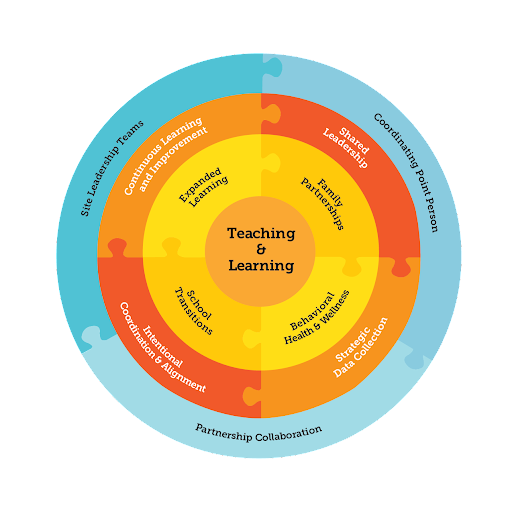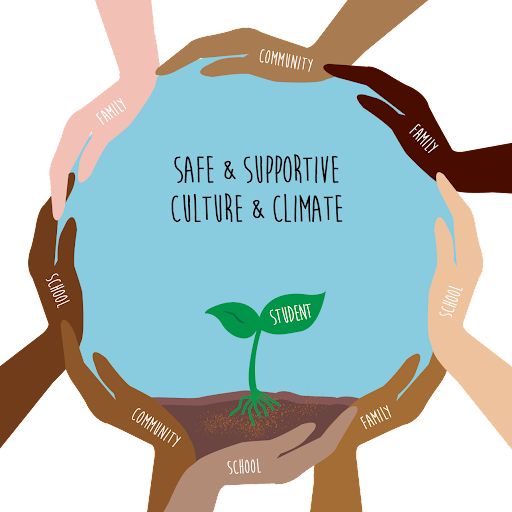
Foundations in Teaching & Learning
When the sun, created by Teaching & Learning, is surrounded by the Programmatic Components, followed by the Essential Practices and then encircled by the Coordinating Structures...

Safe and Supportive Culture and Climate
...meets our students - who are held and supported to be their best selves by school, family & community, then….

Community School Ecosystem
our students will flourish at each stage of their education and graduate from SFUSD with each of the dispositions and behaviors outlined in SFUSD’s Graduate Profile - Ready to think, learn & grow; Ready for career, ready for life; Ready to tackle a changing world; Ready to lead, ready to work with others; Ready to create; and Read to be their best.
Community Schools Approach & Framework Link to this section
SFUSD COMMUNITY SCHOOLS APPROACH: To organize and maximize the resources of schools, including family and community partnerships, around student success.
Our community schools approach aims to strategically coordinate and align resources to support the shared vision, goals and outcomes of each school community. This approach enables us to build effective student, parent, school, district, and community partnerships to support effective teaching and learning, promote whole-child development and prepare our students to graduate ready for success in college, career and life.
SFUSD’s approach includes a comprehensive, unifying framework built upon the foundational elements from our guiding documents - Vision 2025 and Transform Learning. Transform Lives. It articulates the essential programs and practices that any community school would embrace in order to achieve positive, replicable, and equitable results for its students. It also describes the structures and values required to create and sustain the authentic relationships which are at the center of this approach.
| WHY |
SFUSD Vision of Student Success |
|
| HOW | Four Proven Practice |
|
| WITH | Four Foundational Elements & Conditions of Learning |
|
| WHO | Four Community School Operating Structures |
|
| WHAT | Four Programmatic Pillars |
|
This page was last updated on July 17, 2023

